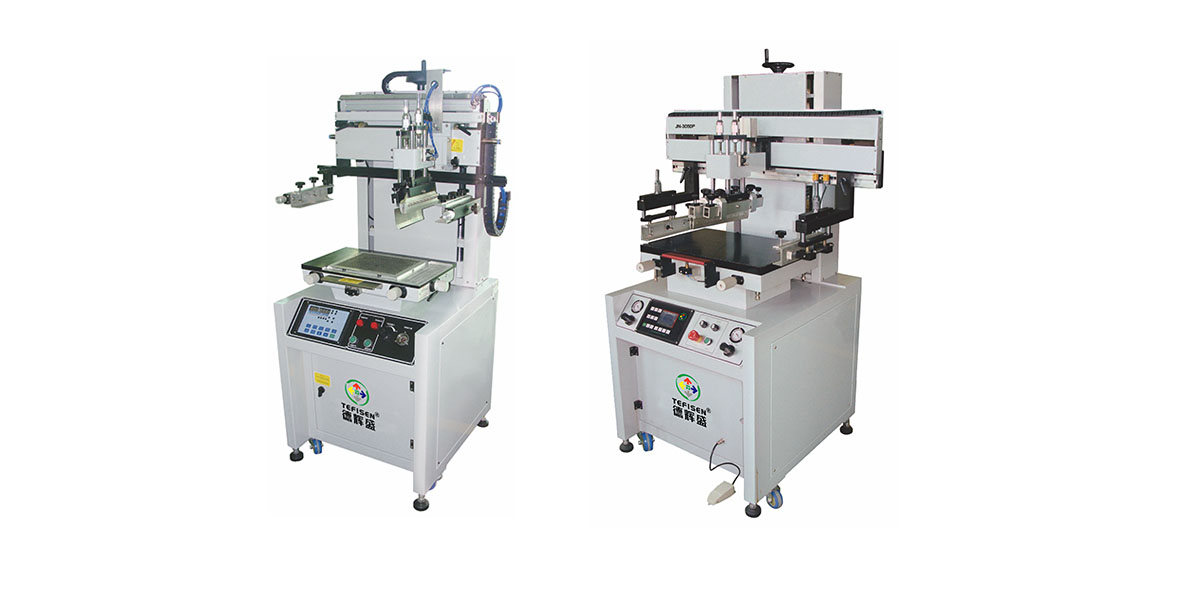A Comprehensive Analysis of PCB Screen Printing Machines: Trends, Market Prospects, Applications, Challenges, and Environmental Standards
As the global electronics industry continues to grow rapidly, printed circuit boards (PCBs) have become a crucial component in a wide range of electronic devices. PCB screen printing machines are an indispensable piece of equipment in the PCB manufacturing process, significantly impacting both production efficiency and the quality and reliability of the PCBs. With technological advancements, PCB screen printing machines are continually evolving in terms of precision, speed, and environmental compliance, driving the technological upgrades and development of the electronics manufacturing industry.
This article will delve into various aspects of PCB screen printing machines, including technology trends, market prospects, application fields, technical challenges and solutions, operational challenges and countermeasures, environmental standards, and requirements. It will also provide data-supported insights with tables and charts.
1. Technology Trends in PCB Screen Printing Machines
4. Technical Challenges and Solutions of PCB Screen Printing Machines
5. Operational Challenges and Countermeasures of PCB Screen Printing
6. Environmental Standards and Requirements
7. Conclusion and Future Outlook
1. Technology Trends in PCB Screen Printing Machines
1.1 Automation and Intelligence
In today's electronics manufacturing industry, automation and intelligence have become the core of production processes. PCB screen printing machines have also experienced a substantial increase in automation, significantly improving production efficiency and precision.
- Automatic Alignment and Sensor Technology: Modern PCB screen printing machines are equipped with high-precision alignment systems and advanced sensors, enabling real-time monitoring of PCB positioning and fine adjustments to ensure print accuracy. Integrated with automated workflows, machines can automatically recognize substrates, adjust screen frames, and complete the entire printing process.
- Intelligent Control Systems: Intelligent control systems are becoming increasingly popular, making operation easier. With AI and big data analytics, the system can monitor various parameters in real-time and make intelligent adjustments, reducing errors. For example, in multilayer board printing, the system can precisely adjust the printing position of each layer, avoiding interlayer errors.
- Remote Control and Management: Intelligent screen printing machines are equipped with remote control features, allowing manufacturers to monitor the machine’s status, adjust parameters, and even perform maintenance and upgrades through the internet. This flexibility reduces the need for manual intervention.
1.2 High Precision and High Resolution
As electronic products continue to shrink in size, the complexity of PCB circuitry increases, and the demand for printing precision is becoming more stringent. Modern PCB screen printing machines can achieve high precision and resolution, meeting the manufacturing needs of intricate circuits.
- Precision Enhancement: Currently, PCB screen printing machines can achieve printing precision of ±0.01mm, suitable for the manufacture of fine circuits. The application of laser alignment technology further improves printing precision, ensuring precise alignment even in multilayer boards.
- High-Resolution Printing: With the application of HD devices, PCB screen printing machines can perform high-resolution printing, ensuring the clarity and accuracy of circuit details, especially in the production of microchips.
1.3 Environmental and Energy-Saving Technologies
Environmental protection and energy efficiency have become inevitable trends in modern industrial manufacturing, and PCB screen printing machines are no exception. Through technological innovations, the energy consumption of the equipment has been significantly reduced while minimizing pollutants during the production process.
- Low Energy Design: New-generation PCB screen printing machines adopt low-energy designs, maintaining high efficiency while reducing energy consumption. For example, by introducing LED light sources to replace traditional UV light sources, the equipment not only consumes less energy but also accelerates ink curing speeds.
- Eco-Friendly Materials and Recycling Technologies: In ink selection, the widespread use of low-VOC (volatile organic compounds) inks and water-based inks reduces air pollution. Additionally, machines are equipped with ink recovery systems that automatically collect unused ink, reducing waste and pollution.

2. Market Prospects
The PCB industry is a crucial component of the global electronics manufacturing sector, and PCB screen printing machines play a pivotal role. According to market research data, the global PCB market reached $78 billion in 2023 and is projected to exceed $120 billion by 2030, with a compound annual growth rate (CAGR) of approximately 6.3%. As the core equipment for PCB production, PCB screen printing machines have a promising market outlook.
2.1 Global Market Size and Growth
The growth of the PCB industry is mainly driven by emerging technologies such as 5G, IoT, artificial intelligence, and automotive electronics. These technologies have led to a significant increase in demand for electronic products, particularly in the Asia-Pacific region, where PCB market growth is particularly evident.
| Region | Market Size (billion USD) | Market Share (%) | Growth Rate (%) |
| Asia-Pacific | 47 | 60 | 7 |
| North America | 15 | 19 | 5 |
| Europe | 10 | 13 | 4.5 |
| Other Regions | 6 | 8 | 4 |
2.2 Key Drivers
- 5G Technology: The rapid development of 5G communication equipment has increased demand for PCBs, especially in multilayer PCBs for base stations and routers, which require high-precision screen printing technology.
- IoT and Smart Devices: The proliferation of IoT has led to an increasing number of smart devices, such as smart homes and wearables, driving the demand for PCBs.
- Automotive Electronics and New Energy: Electronic control units, sensors, and navigation systems in electric vehicles require high-precision PCBs, driving demand for PCB screen printing machines.
2.3 Challenges and Opportunities
Although the market outlook is promising, the PCB screen printing machine industry also faces increased competition. Technological advancements require manufacturers to constantly update their equipment to stay competitive. Stricter environmental regulations also pose higher standards for the industry. However, these challenges present new opportunities; through technological innovation and equipment upgrades, companies can gain a larger market share.
3. Application Fields
PCB screen printing machines are widely used across various industries. Below are the key application fields:
- Consumer Electronics: Consumer electronics like smartphones, computers, and tablets have the largest demand for PCBs. As these devices become smaller and more complex, PCB circuits become increasingly intricate, requiring high-precision printing machines.
- Automotive Electronics: The development of automotive electronics has created significant demand for PCBs. Electric control systems, sensors, and radar components in electric vehicles require high-quality PCBs.
- Medical Devices: PCBs in medical devices must have high reliability and precision. Devices like pacemakers and monitoring equipment require stringent manufacturing standards.
- Communication Equipment: The rise of 5G communication equipment has also led to a massive demand for PCBs with high anti-interference capabilities and signal transmission speeds.
- Other Industries: Aerospace, defense, and industrial automation sectors also widely use PCB screen printing technologies.
| Industry | Application Proportion (%) |
| Consumer Electronics | 35 |
| Automotive Electronics | 25 |
| Communication Equipment | 20 |
| Medical Devices | 10 |
| Others | 10 |
4. Technical Challenges and Solutions of PCB Screen Printing Machines
4.1 High-Precision Printing Challenges
As electronic devices become smaller and PCB circuit designs grow more complex, there are increasing demands on the precision of screen printing machines. Particularly when printing micro characters and fine lines, even a slight error can cause the entire product to fail.
Solution: To address this issue, modern PCB screen printing machines incorporate high-precision alignment systems and laser calibration technologies, enabling accuracy within ±0.01mm. This ensures precise alignment of each PCB layer. Additionally, by using high-resolution screens and optimized ink formulas, the print quality is improved, and errors are minimized.
4.2 Multi-Layer PCB Printing Challenges
During the production of multi-layer PCBs, each layer must be precisely aligned, or the entire circuit's functionality could be affected. The manufacturing process for multi-layer boards is complex, requiring high temperatures and pressure.
Solution: To solve this challenge, modern PCB screen printing machines employ advanced automatic alignment technology and temperature control systems to maintain stability under high temperatures and pressure. Automated control systems can also adjust printing parameters in real-time to meet the demands of different layers, reducing errors caused by layer misalignment.
4.3 Compatibility with Different Materials
Different materials (such as ceramics, metal substrates, etc.) impose distinct requirements on screen printing machines, especially in terms of ink adhesion and drying speed. Traditional inks may not meet the needs of these special materials.
Solution: Modern PCB screen printing machines are equipped with multi-functional print heads and adjustable ink systems, which allow the adjustment of ink formulas and printing parameters according to the characteristics of different materials, ensuring printing quality across various substrates.
4.4 Chart: Comparison of PCB Screen Printing Technical Challenges and Solutions
| Technical Challenge | Main Issue | Solution | Outcome |
| High-Precision Printing | Issues with printing micro characters and fine lines | High-precision alignment systems, laser calibration, high-resolution screens | Achieves accuracy of ±0.01mm, ensuring precise layer alignment |
| Multi-Layer PCB Printing | Difficulties in aligning each PCB layer | Automatic alignment technology, high-precision sensors, stable printing platforms | Enables high-precision multi-layer PCB production, avoiding layer errors |
| Ink Drying and Curing | Slow drying speed, high energy consumption, ink degradation risk | LED light sources replacing traditional UV, optimized ink formulas | Quick ink curing, reduced energy consumption, minimized degradation risks |
5. Operational Challenges and Countermeasures of PCB Screen Printing
5.1 Mesh Tension Control
The tension of the screen mesh has a direct impact on print quality. Both too high and too low tension can lead to variations in printing quality, especially in high-speed printing processes where stable mesh tension is crucial.
Solution: Modern PCB screen printing machines are equipped with automatic tension adjustment systems, which use sensors to monitor mesh tension in real-time and automatically adjust it, ensuring that the screen remains at the optimal tension. This significantly improves print quality and reduces the need for manual adjustments.
5.2 Ink Viscosity Control
Ink viscosity directly affects the uniformity and adhesion of the print. If the ink viscosity is too high or too low, it may result in uneven printing, affecting the final product quality.
Solution: To solve the ink viscosity control problem, modern PCB screen printing machines are equipped with temperature control systems and automatic ink stirring devices. The temperature control system maintains a constant ink temperature, ensuring stable viscosity, while the automatic stirring device prevents ink sedimentation and thickening, maintaining ink uniformity.
5.3 Printing Environment Control
The temperature and humidity of the printing environment greatly affect the drying and adhesion of the ink. Unstable environmental conditions can lead to uneven ink drying, affecting print quality.
Solution: Modern PCB screen printing machines are often used in production environments with enclosed environmental control systems, incorporating air filtration and temperature/humidity control devices to ensure a stable printing environment. These systems effectively regulate temperature and humidity, ensuring consistent print quality.
5.4 Automated Monitoring Systems
In the production process, any anomaly can impact print quality, making real-time monitoring systems essential for detecting and adjusting equipment status.
Solution: Modern PCB screen printing machines are equipped with advanced sensors and data feedback systems to monitor various parameters in real-time during production. The system automatically detects and adjusts for any abnormalities, reducing human error and improving production stability.
6. Environmental Standards and Requirements
With the increasing global focus on environmental issues, the environmental requirements for PCB screen printing machines have also been elevated. Meeting environmental standards is not only part of corporate social responsibility but also a key factor in improving market competitiveness.
6.1 Ink Environmental Standards
Traditional PCB screen printing inks often contain high concentrations of volatile organic compounds (VOCs), which have a significant impact on air quality. To meet environmental requirements, modern PCB screen printing machines use low-VOC or VOC-free environmentally friendly inks. These inks not only reduce air pollution but also minimize health risks for operators.
- Low-VOC Ink: The use of low-VOC inks significantly reduces gas emissions during the printing process, thereby minimizing environmental impact.
- Water-Based Ink: Water-based inks are another environmentally friendly option, using water as the solvent rather than organic solvents, significantly reducing VOC emissions and complying with stricter environmental standards.
6.2 Waste Recycling
During PCB production, a large amount of waste is generated, including residual ink and production scraps. If not properly treated, these wastes can cause serious environmental pollution.
- Ink Recycling: Modern PCB screen printing machines are equipped with ink recycling systems that automatically reclaim unused ink, reducing waste. The discarded ink is treated and transformed into harmless substances, minimizing environmental pollution.
- Waste Disposal: Solid waste generated during production must also meet environmental standards. Modern production facilities typically have waste disposal systems in place to ensure that waste is properly processed in compliance with environmental standards like ISO 14001.
6.3 Energy Consumption
The production process of PCB screen printing involves significant energy consumption, especially in heating and curing the ink. To reduce energy consumption and production costs, modern PCB screen printing machines adopt energy-saving technologies.
- Energy-Efficient Design: New PCB screen printing machines utilize highly efficient LED light sources to replace traditional UV lights. This design not only reduces energy consumption but also improves ink curing efficiency.
- Smart Energy Management: Through smart energy management systems, the energy consumption of the equipment can be monitored in real-time, optimizing energy usage and reducing overall consumption.
6.4 Environmental Standards for Production Facilities
The environmental control of production facilities is equally important. A well-managed production environment ensures product quality and helps reduce pollution during the production process.
- Air Filtration Systems: Modern production facilities are typically equipped with efficient air filtration systems that remove harmful substances and dust from the air, providing a clean production environment.
- Temperature and Humidity Control: The temperature and humidity in the production facility directly affect the quality of PCBs, so temperature and humidity control systems are necessary to ensure a stable production environment.
7. Conclusion and Future Outlook
As a core device in electronics manufacturing, PCB screen printing machines face both opportunities and challenges in terms of technological development and market prospects. From the trend of automation and intelligence to the rising demand for environmental compliance, PCB screen printing machines are constantly evolving to meet new technical requirements and market needs.
In the future, with the growth of emerging technologies like 5G, IoT, and smart devices, the market demand for PCB screen printing machines will continue to rise. Additionally, stricter environmental regulations will push companies in the industry to focus more on the environmental performance of their equipment and the greening of their production processes. The application of technologies like IoT and artificial intelligence will further drive the development of PCB screen printing machines, helping the electronics manufacturing industry progress.
In terms of technology, future PCB screen printing machines will focus more on precision and speed, while improving production efficiency through intelligent control systems. On the environmental front, the continuous emergence of new materials and processes will advance the green manufacturing process of PCBs, enabling equipment to meet both production needs and environmental standards.
In summary, PCB screen printing machines, as core equipment in modern electronics manufacturing, have a bright future in both technology development and market growth. Through continuous innovation and equipment upgrades, the industry is poised for an even better future.

